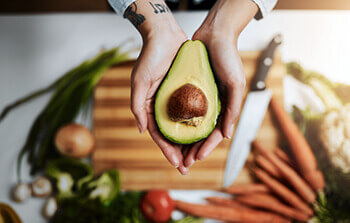Curcumin and turmeric have anti-inflammatory and anticancer properties
Curcumin and turmeric exhibit anti-hyperglycaemic effects
Curcumin and turmeric have extraordinary antioxidant properties
Curcumin and turmeric have antipsoriatic effects
Curcumin and turmeric have anti-atherogenic effects
Curcumin and turmeric could improve your brain function
Conclusion
Did you know that approximately one-fourth of current medication is derived from plants?
While used extensively in Indian cooking and Ayurvedic medicine for centuries, modern medicine has in recent decades also shown the excellent medical benefits of curcumin and turmeric.
Turmeric is a plant (Curcuma longa L) which is commonly used in Asian food. Most people refer to turmeric as a spice which is made by grinding up turmeric root into a bright yellow colour powder with a peppery, bitter flavor. Curcumin is a compound that is found in turmeric, which gives the spice its beneficial health characters.
So the difference between the two is that turmeric contains many plant substances, with curcumin being one of the most powerful. Turmeric contains little amounts of curcumin, approximately 3%, by weight.
Therefore, most studies used turmeric extracts that are standardized to have large amounts of curcumin.
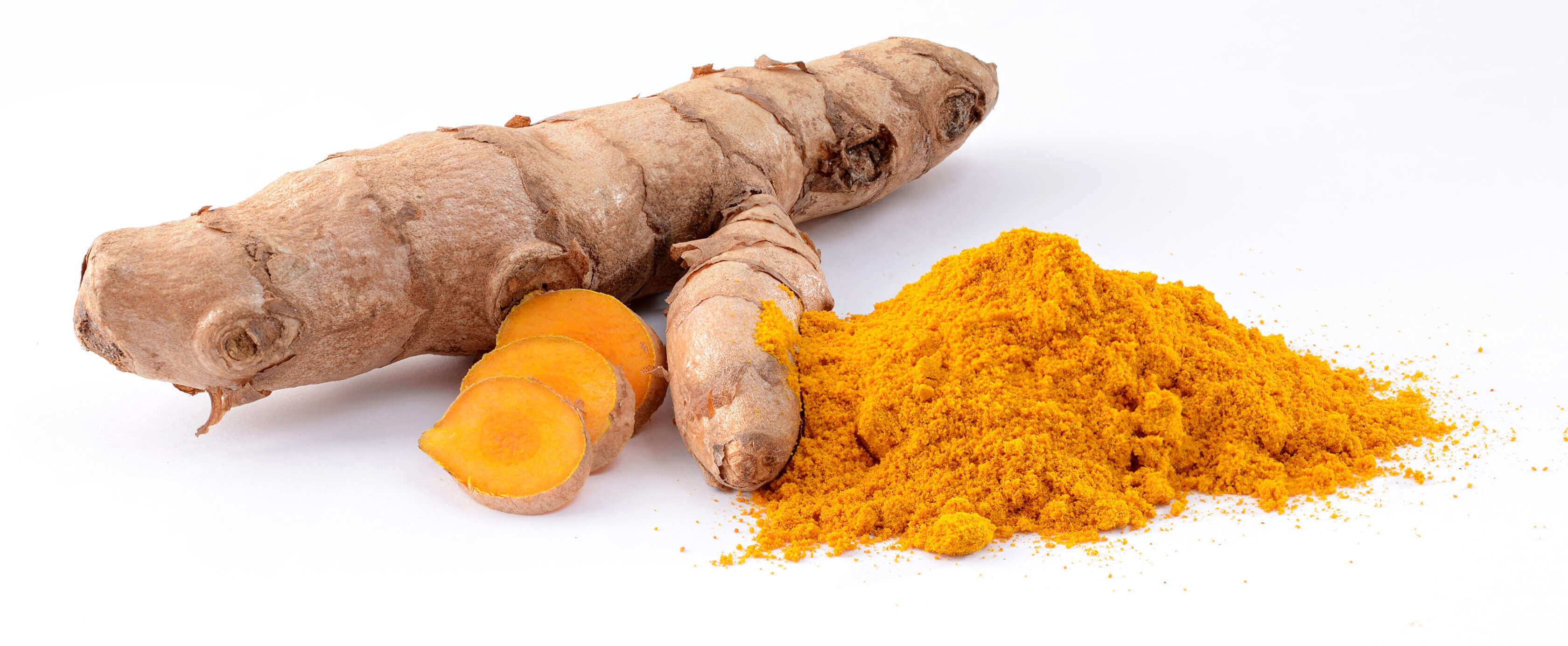
Curcumin has anti-inflammatory, anti-oxidative, and anti-lipidemic properties and has positive effects on different diseases through epigenetic regulation.
Findings of many recent studies showed the role of epigenetic inactivation of essential genes that modify human pathologies, such as obesity, inflammation, neurocognitive disorders, and cancers.
Epigenetic changes include alteration in DNA methylation, histone modulation, or mutated microRNA expression patterns which are recognized to be interconnected and have a pivotal role in tumor progression and lower success rates of conventional chemotherapy.
Lifestyle and diet can affect the majority of epigenetic changes. Accordingly, plants as dietary supplements are likely to be considered as promising sources that have the ability to reverse these epigenetic modifications, and to positively regulate gene expression.
Many recent studies demonstrated the key role of curcumin as an epigenetic regulator in several neurological diseases, diabetes, and inflammation.

Curcumin and turmeric have antifungal properties
Aspergillus flavus (A. flavus) is one of the most harmful fungal species, due to its negative impact on cereals and direct infections in immunocompromised patients.
The high amount of aflatoxins produced from A. Flavus represents one of the most potent naturally occurring toxic and hepatocarcinogenic compounds.
These aflatoxins are classified as group 1 human carcinogens according to the International Agency for Research on Cancer and have affected nearly 4.5 billion people in developing countries; aflatoxicosis (the poisoning that results from ingesting aflatoxins) is ranked sixth among the ten most important health risks.
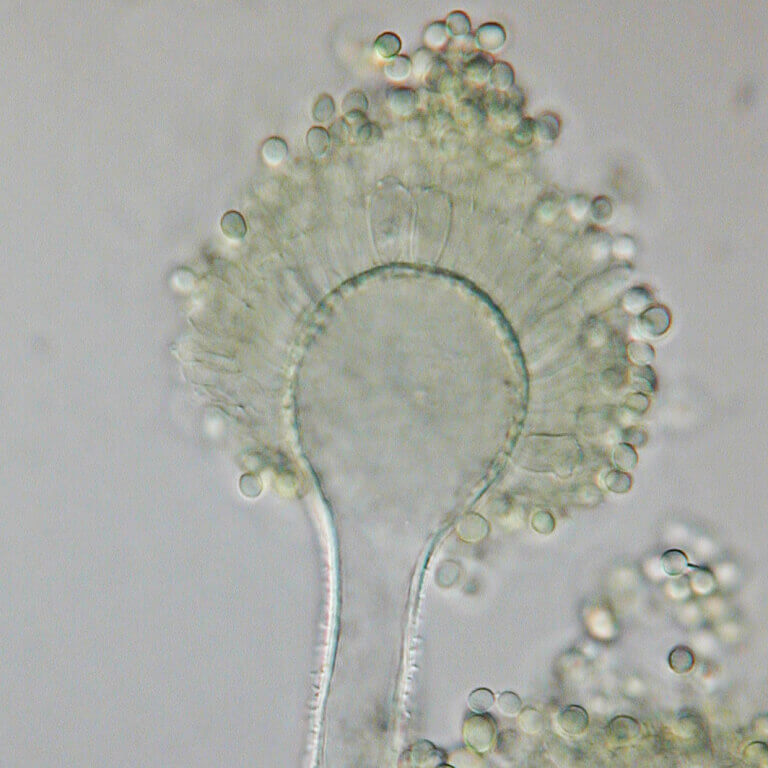
So why is all this important? Findings of a current study suggest that essential oil derived from turmeric has a significant fungicide potential and can be used to inhibit fungal contamination in food.
This may be attributed to the ability of essential oils to disrupt the integrity of plasma membrane and mitochondrial dysfunction, triggering metabolic stagnation in A. flavus.
Turmeric oil (derived from turmeric) and curcumin were studied against fifteen isolates of dermatophytes, four isolates of pathogenic molds and six isolates of yeasts.
Findings of a study showed that all 15 isolates of dermatophytes could be inhibited by turmeric oil at dilutions of 1:40−1:320. None of the isolates of dermatophytes were inhibited by curcumin.
The other four isolates of pathogenic fungi were inhibited by turmeric oil at dilutions of 1:40−1:80 but none were inhibited by curcumin.
All six isolates of yeasts tested proved to be insensitive to both turmeric oil and curcumin. According to another study, turmeric oil could inhibit dermatophytes and pathogenic molds.
The absence of antifungal compounds with reduced side effects underscores the significance of studying natural products for this purpose.
This research evaluated the antifungal activity of curcumin against 23 fungi strains and its inhibitory effect on the adhesion of Candida species to human buccal epithelial cells.
Curcumin was a more potent antifungal than fluconazole against Paracoccidioides brasiliensis, the causal agent of the neglected disease paracoccidioidomycosis.
Curcumin remarkably prevented the adhesion of Candida species isolated from AIDS patients to buccal epithelial cells, showing that curcumin is a promising lead substance that warrants further investigation into its therapeutic use in immunosuppressed patients.
Curcumin and turmeric have anti-inflammatory and anticancer properties
Cancer is a dreadful disease involving uncontrolled cell growth, and abnormal cell growth with metastasis potential, which is the possibility to invade or spread to other parts of the body.
In fact, there is no single form of cancer. There are various forms of cancer, yet most of them have several things in common. Some good news is that certain types of cancer may be affected by curcumin.
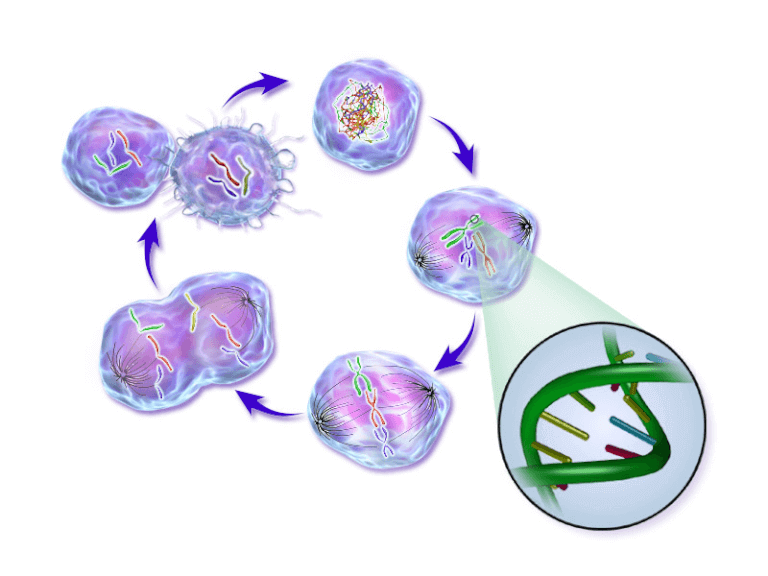
Curcumin has been found to be pharmacologically safe and effective. Many human clinical trials showed that there is no dose-limiting toxicity if administered at doses up to 10 g/day.
Findings of these trials support the concept that curcumin has a leading role in both cancer protection and prevention.
Findings of the current study suggest that curcumin may protect against cancers of the digestive system like colorectal cancer.
In a clinical trial, oral curcumin (2 g or 4 g per day for 30 days) reduced the number of lesions by 40% in 44 men.
As many as 80% of the anticancer drugs have their roots in natural products derived from “traditional” medicine. And due to all that we know now about the health benefits of curcumin, many researchers evaluate its efficiency as a potential anticancer agent.
Findings of this current study suggest that β-sesquiphellandrene, a turmeric-derived compound, has antiproliferative effects comparable to those of curcumin in human leukemia, multiple myeloma, and colorectal cancer cells.
This compound was also found to be highly effective in suppressing cancer cell colony formation and inducing apoptosis.
A synergistic effect was observed with the combination of β-sesquiphellandrene and chemotherapeutic agents such as velcade, thalidomide and capecitabine.
Therefore, findings of this study suggest that β-sesquiphellandrene has anticancer potential comparable to that of curcumin.
Turmeric has been shown to contain a novel water-soluble antioxidant peptide named turmerin, which is a heat-stable noncyclic peptide containing 40 amino acid residues.
It was found to be an efficient antioxidant/DNA protectant/antimutagen. It is resistant to trypsin, pepsin, heat, and UV radiation.
Turmerin contains three residues of methionine (an amino acid) that are partly responsible for its antioxidant activity.
Turmerin provides 80% protection to membranes and DNA against oxidative injury. Turmerin also inhibits reactive oxygen species (ROS)-induced arachidonate release and the mutagenic activity of t-butyl hydroperoxide.
When tested on human lymphocytes, turmerin was found to be noncytotoxic up to milligram concentrations. Findings of this study suggest that turmerin inhibits enzymatic activity and neutralizes pharmacological properties such as cytotoxicity, edema, and myotoxicity of multitoxic phospholipase A2. Surprisingly, turmerin has also been linked with anti-HIV activity.
The major components in turmeric oil are ar-turmerones. As much as 60% of turmeric oil consists of turmerone (15%), ar-turmerones (31%), and curlone (10%).
These turmerones exhibit antimutagenic activity. These were found to be active in suppression of cancer cell growth.
Furanodiene is another active component of turmeric oil that exhibits anti-inflammatory activity. In one study, furanodiene and furanodienone were effective in suppressing inflammation of mouse ears by 75% and 53%, respectively, at a dose of 1.0 µmol.
Interestingly, the activities of furanodiene and furanodienone were comparable to those of indomethacin, the commonly used anti-inflammatory agent.
Furanodienone has been shown to suppress the proliferation of a wide variety of tumor cells such as hepatocellular carcinoma, leukemia, uterine cervical cancer, and breast cancer cells.
Inducing apoptosis (programmed cell death) is the main mechanism of action of furanodiene against cancer cells.

In a recent study, furanodiene significantly prevented proliferation and increased lactate dehydrogenase release in breast cancer cells.
Lactate dehydrogenase is a sensitive marker for cell membrane integrity. This means that the large amount of lactate dehydrogenase released from both cell lines after furanodiene treatment is an indication of a significant damage. Consolidating all the findings, furanodiene is shown to be remarkably cytotoxic to breast cancer cell lines.
Furanodiene is likely to suppress breast cancer cell growth both in vitro and in vivo and could be a new lead compound for breast cancer chemotherapy.
Calebin A is a novel compound isolated from C. longa. Like curcumin, this compound can suppress cell growth and induce apoptosis in drug-resistant human gastric cancer cells.
Germacrone, a volatile substance isolated from turmeric, inhibits the growth of a variety of cancer cells. Findings of this current study suggest that germacrone can suppress the proliferation of breast cancer cells by inducing cell cycle arrest and inducing apoptosis.
Germacrone exhibited anti inflammatory activity in carrageenin-induced edema in rats and acetic acid-induced vascular permeability as well as the writhing symptoms in mice.
An assay of carrageenin-induced hind paw edema in rats by another group revealed the anti-inflammatory activity of germacrone.
Curcumin is a powerful anti-inflammatory compound. Actually, it’s so strong that it is as effective as some anti-inflammatory medications, without the side effects.
Curcumin-mediated induction of cell death was directly related to the extent of NF-kB inhibition. NF-kB is a molecule that switches on genes related to inflammation and cancer. Findings of current studies suggest that NF-kB plays a major role in many chronic diseases.
All of these previous studies support the idea that besides curcumin, turmeric contains numerous other compounds that exhibit anti-inflammatory and anticancer activities.
Curcumin-free turmeric components also have anticancer and anti-inflammatory properties. Some of these compounds have properties that are independent from curcumin, whereas other compounds’ properties are similar to those of curcumin. Some components of turmeric seem to be as effective as, or even more effective than, nonsteroidal anti-inflammatory drugs.
Findings of the studies suggest that curcumin and turmeric have a positive role in suppressing of growth of cancerous cells and reducing angiogenesis (growth of new blood vessels in tumors) and metastasis (spread of cancer).
Curcumin and turmeric are likely to affect proliferation, and spread of cancer at the molecular level. This will not only lead to cancer therapy, but also to the prevention of cancer.
Curcumin and turmeric exhibit anti-hyperglycaemic effects
Diabetes is a disorder in which your blood glucose level is too high because the body isn't properly using or doesn't make the hormone insulin. Glucosidase inhibitors have been used to control postprandial hyperglycaemia in type 2 diabetes patients.
Acarbose and miglitol, the conventionally used glucosidase inhibitors for the management of postprandial hyperglycaemia in diabetic patients, are known to be associated with several side effects; therefore, search for glucosidase inhibitors from natural sources with lesser side effects attains more interest in the scientific community.
Findings from many studies suggest that C. longa rhizome has anti-diabetic characters in terms of its ability to inhibit glucosidase activity has been demonstrated by many studies.The high α-amylase and α-glucosidase inhibitory potentials of turmeric volatile oils were demonstrated in this study.

The utility of curcumin has been tested in several in vivo and in vitro models implying insulin resistance; for instance, curcumin reduced insulin resistance in rats with metabolic syndrome or with polycystic ovarian syndrome, and in cultured human liver HepG2 cells.
Findings of a current study suggest that anti-diabetic activity of curcumin may be due to its potent ability to suppress oxidative stress and inflammation.
Additionally, it shows a beneficial role on the diabetes induced endothelial dysfunction and induces a down-regulation of nuclear factor-kappa B. Curcumin possesses a protective role against advanced glycation as well as collagen crosslinking and through this way, mitigates advanced glycation end products-induced complications of diabetes.
Curcumin also reduces blood glucose, and the levels of glycosylated hemoglobin in diabetic rats.
Curcumin and turmeric have extraordinary antioxidant properties
It is believed that oxidative damage is one of the main mechanisms behind aging and many chronic diseases. Oxidative damage involves the presence of an excess of free radicals, and highly reactive substances with unpaired electrons.
These free radicals have the potential to react with essential organic substances such as proteins, fatty acids, and DNA. Thus, oxidative stress damages cells, proteins, and DNA, which can ultimately lead to aging and age-related degenerative processes.
Antioxidants are so valuable because they safeguard your body from free radicals.

Curcumin and turmeric have potent antioxidant properties. Findings of current studies suggest that they not only can neutralize free radicals, but also enhance the activity of your body's own antioxidant enzymes.
Oxidants and tumor necrosis factor-alpha (TNF-alpha) stimulate transcription factors such as nuclear factor-kappaB (NF-kappaB), which is associated with the transcription of proinflammatory mediators, including interleukin-8 (IL-8).
Glutathione is one of the body's most important and potent antioxidants. Findings of a study suggest that curcumin has multiple properties: as an oxygen radical scavenger, antioxidant through modulation of glutathione levels, and antiinflammatory agent through inhibition of IL-8 release in lung cells.
Research findings suggest that, among the naturally occurring substances, curcumin and related compounds from dry rhizome of C. longa stand out thanks to their high antioxidant properties against free radical induced autoxidation of unsaturated fatty acids. Additionally, these compounds are exceptionally free of toxicity.
Curcumin and turmeric have antipsoriatic effects
In addition to the above mentioned immune-modulating, anti-inflammatory actions, curcumin antioxidants have a positive effect on a mouse model of psoriasis.
This study suggested that topical administration of curcumin could induce orthokeratosis (abnormal thickening of the outer layer of the skin without nucleus in the cells) in the modified mouse tail test.
Moreover, a study performed on patients with active psoriasis suggested that topical administration of curcumin results in resolution of the psoriatic activity as assessed by clinical, histological and immunological criteria.
Findings of this study suggested that this anti-psoriatic effect is associated with a curcumin-caused modulation of phosphorylase-kinase (PhK) activity, which integrates multiple calcium/calmodulin-dependent signaling pathways.
These pathways are coupled to glycogenolysis and ATP-dependent phosphorylation, thus ensuring the required energy supply for cell proliferation and migration.
Curcumin and turmeric have anti-atherogenic effects
Atheroma is defined as degeneration of the walls of the arteries due to accumulation of fatty deposits and scar tissue, and this ultimately leads to restriction of the circulation and a risk of thrombosis.
Until recently, prevention of atheroma emphasized the pharmacological and/or dietary intervention to decrease the abnormally high levels of the plaque-forming cholesterol, especially of the LDL-cholesterol.
There is also a support for the key arteriosclerosis-causing role of blood triglyceride increase, uncontrolled blood coagulation and changes in thyroxine and estrogen levels.
Findings of various studies suggest that oxidation of LDL-cholesterol is oxidized it becomes very injurious to the blood vessel wall, thus contributing to the arteriosclerotic degeneration by increasing the accumulation of lipids in macrophages.
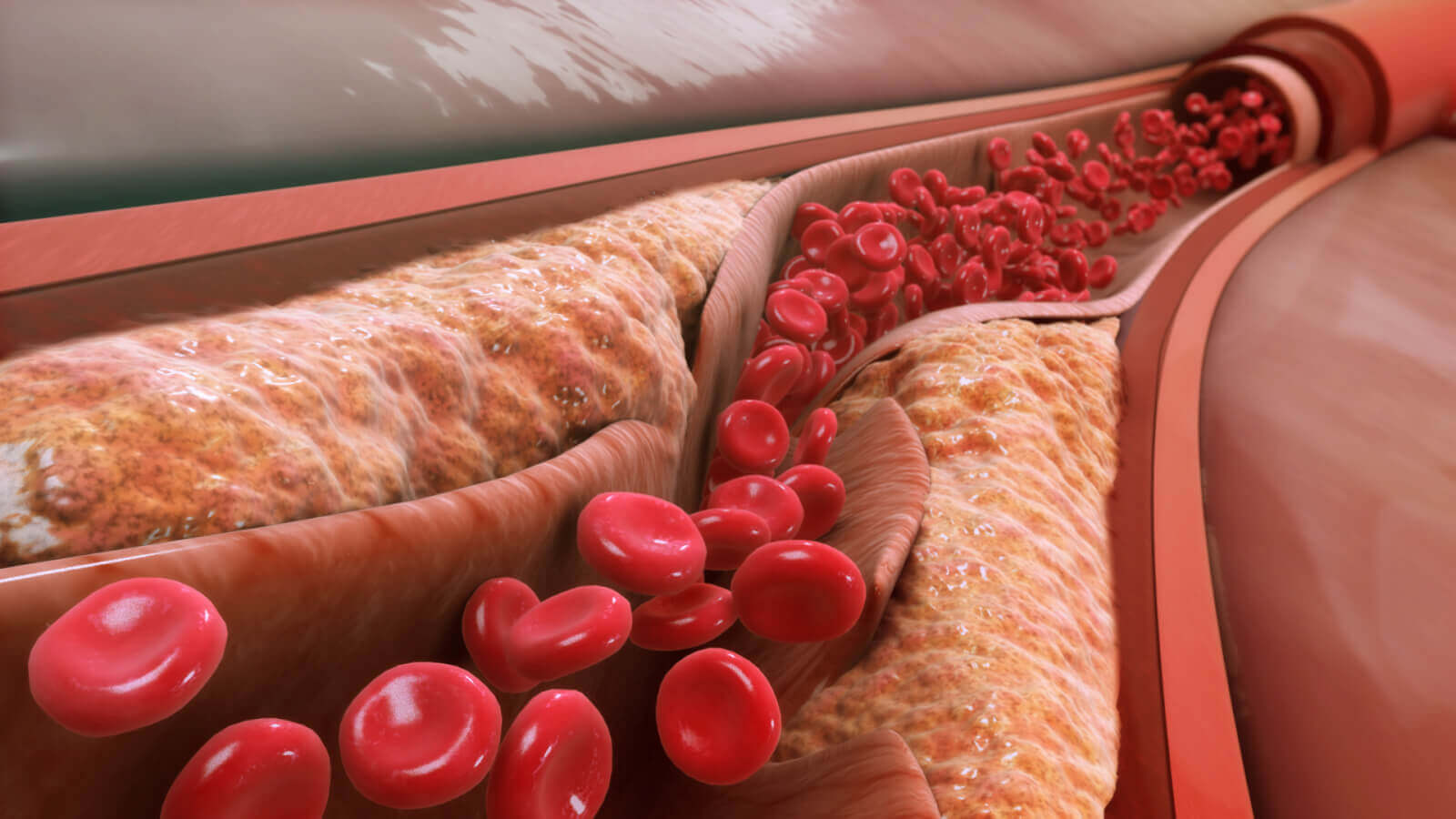
The blood levels of peroxides are higher for males than for females in the early decades, until menopause when lipid peroxide levels are increased remarkably in women, in agreement with their increased vulnerability to arteriosclerosis-related cardiovascular disease after menopause.
This emphasizes the concept that lipid peroxidation is actually a principal risk factor, and that its adequate control by antioxidants may safeguard against atherosclerosis.
In a study done on rabbits, oral administration of a turmeric extract in the diet resulted in a decreased oxidation of serum LDL-cholesterol.
This study also unveiled the level at which the chain of lipid peroxidation is blocked by the curcuma antioxidants, since the animals treated with the extract showed higher levels of conjugated dienes with lower levels of hydroperoxides than the non-treated controls.
Moreover, the thoracic aorta suffered a milder atheroma plaque formation process in the animals treated with the extract than in those receiving the control diet.
This study showed that there is a turmeric-induced decrease in lipoperoxides in mouse blood and liver were followed by preliminary clinical research on healthy human volunteers.
At the end of a treatment period of 45 days, there was a remarkable decrease in the levels of serum lipid peroxides. Moreover, the intake of curcuma extract did not result in any liver or kidney side effects or toxicity.
In a study performed during 60 days on 18 healthy men and 12 women (they received the above daily dose of the curcuma extract) ranging in age from 40 to 90 years, the levels of HDL- and LDL-peroxides showed a 25–50% significant decrease of these peroxides on the 60th day of treatment, without side effects or toxic responses.
The positive effects of curcumin products on cardiovascular system are not only because of their antioxidant action, but also thanks to their effect in lowering the abnormally raised level of plasma fibrinogen, which plays a key role in the formation of thrombi and related heart attacks and stroke.
Curcumin and turmeric could improve your brain function
Recent evidence shows that curcumin has antioxidant properties and protects the brain against oxidative stress.
Findings of a 2009 study suggest that curcumin is effective in amelioration of cognitive deficits, and might be beneficial for the management of sporadic dementia of Alzheimer's type.
In another study, curcumin has antidepressant-like effects which have been observed in stress-induced depression rat models. Administration of curcumin resulted in a dose-dependent increase in brain-derived neurotrophic factor (BDNF), which is a type of growth hormone that functions in your brain.
It is believed that decreased levels of this factor are associated with common brain disorders such as depression and Alzheimer's disease.
Conclusion
Turmeric is considered in some medical circles to be the most effective nutritional supplement in nature.
According to many published research papers , it has excellent benefits for your body and brain including reducing inflammation, oxidative stress, reducing risk of strokes, lowering growth of cancerous cells, and reducing blood glucose.
The main active ingredient in turmeric is curcumin, which is a substance with powerful anti-inflammatory and antioxidant properties. It is so potent that it is as effective as some anti-inflammatory medications, without side effects or toxic reactions.
Inflammation plays a major role in nearly all chronic diseases such as cardiovascular disease, cancer, metabolic syndrome, and Alzheimer's. Curcumin suppresses many molecules known to play major roles in inflammation such as IL-8, and NF-kB.
Oxidative stress is a state that occurs when there is an imbalance between the production of free radicals and the ability of the human body to remove the excess free radicals.
Oxidative damage is likely to be involved in Alzheimer's, cardiovascular disease and age-related development of cancer. Curcumin has potent antioxidant properties.
It not only neutralizes free radicals but also boosts your body's own antioxidant enzymes. It is a potent anti-inflammatory agent and antioxidant.
Curcumin also has beneficial effects on several factors known to play a role in heart disease. Curcumin lowers the abnormally raised levels of plasma fibrinogen, which plays a key role in the formation of thrombi and related heart attacks and strokes.
Curcumin and turmeric could suppress the growth of cancerous cells and reducing angiogenesis (the growth of new blood vessels in tumors) and metastasis (spread of cancer). This will not only lead to cancer therapy, but also prevention of cancer.
Curcumin could reduce blood glucose, and the levels of glycosylated hemoglobin. This is very beneficial in the treatment of diabetes. Topical administration of curcumin on patients with active psoriasis results in resolution of the psoriatic activity.
Essential oil derived from turmeric has a significant fungicide potential and can be used to inhibit fungal contamination in food. After knowing all this, I feel like turmeric’s status as a superfood is very well deserved. Do you use it for your health?
Afterthought. Check your health regularly with us to have a happy life
We’ve established curcumin and turmeric have beneficial effects on your health, but you should also assure that you do not have issues with hormone regulation, inflammation, detoxification, or methylation. You can check these with genetic testing:
Our editor’s choice for an overall x-ray of your health is healthPower
For skin health and care, DNA Gene Skin (Skinetics) is a great choice. It will help you understand what causes and how to treat age spots, acne, pimple scars, fine lines, sagging, black/white head, pigmentations, and sallow skin tone.
For testing risk of heart attacks, diabetes, and high blood pressure, DNA Gene Health is the way to go. It will help you learn if you have inherited risky gene variants.
Understanding your genetic profile helps you, your family, and your doctor to decide the best treatment strategy for you.
For diet, fitness, detoxification, inflammation, methylation, hormones even mental wellness, another test we like is totalPower by dnaPower.
It will provide you with actionable health guidance based on the relationship between nutrition, lifestyle and your genes to achieve lifelong gains in your health and wellness. This DNA test analyzes over 200 SNPs (gene variations) related to overall physical health.



